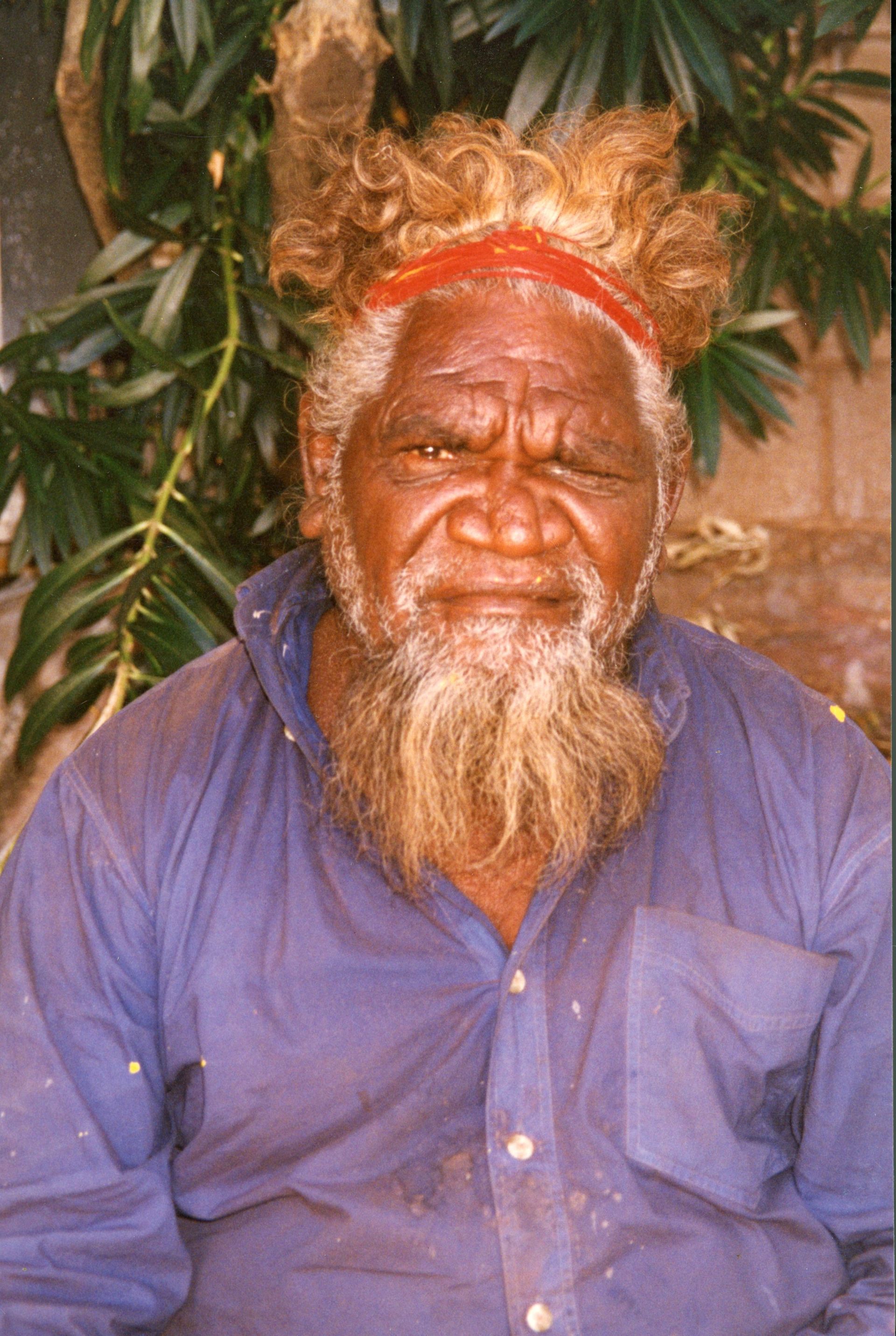Dr George
Tjapaltjarri
Dr George paintings possess a wonderful rawness and boldness, conveying his strong, continuous association with his traditional country, ceremonies and the application of body paint designs.
Region: Gibson Desert, WA
DOB: c1930 - 2017
Place of Birth: Kirriwirri, WA
Significant Countries: Karrinwarra, WA, Kilinga (also Kilingya) – Wanampa (west of Jupiter Wells), Kiwirrkurra, Winparku, WA
Language: Pintupi
Communities: Kiwirrkura, Tjukurla, WA
George Takata Ward Tjapaltjarri, also known as George Tjampu (Ward) Tjapaltjarri, or ‘Dr’ George as he became known was born circa 1930 south-west of Jupiter Well in the Gibson Desert of Western Australia close to the location of present-day Kiwirrkurra. His traditional country includes Karrinwara, west of Kintore, and Kilingya in Wenampa located to the west of Jupiter Well.
The title ‘Dr’ referred to his highly respected work as a community health worker and position as a traditional medicine man of his people. Dr George was one of several Maparn (traditional healers) who worked in association with the Kintore and Tjukurla Medical Clinics. The term Maparn is closely associated with the Kimberley region that stretches across from Western Australia through the Top End. Dr George was a powerful Maparn renowned for his “laying on of hands” and commanded complete respect. In Central Australia, he is described as a Ngangkari, a Pitjantjatjara word that means ‘traditional healer’.
Dr George is of the Pintupi/Luritja language groups. Together with his family ‘Dr’ George first came into contact with white society when he walked out of the desert in 1964. He is an important Pintupi Elder with the responsibility for the initiation of young men into the traditions and ceremonies of their way of life and the esoteric knowledge connected to the ‘Tingari Cycle’. The teaching involved the use of painting horizontal and vertical lines, the ceremonial body paint that was painted on young men during Malliera initiation ceremonies.
Dr George is the younger brother of Papunya Tula artist Tommy Lowry Tjapaltjarri. Dr George first painted a couple of small paintings in Papunya in 1971 and then also painted for Papunya Tula Artists in the mid to late 1970s. He returned to painting in the late 1980s, first for Papunya Tula and then for Gallery Gondwana and occasional other private dealers as an independent artist, achieving recognition for his bold, scaled-up designs.
Since the early 1980’s, Dr George’s talents have been creatively expressed in the field of Contemporary Art. Relying upon traditional narrative and visual language in association with such sacred sites as Ungarla, Nyinmi and Karinwarra, Tjapaltjarri transfers the designs of ephemeral ground sculpture (concentric circles and U-shapes), ceremonial body decoration (parallel lines) and sacred objects onto contemporary media. His paintings which depict the subjects of the Tingari Cycle (journeys of the mythological ancestors) and Snake Dreaming, incorporate both traditional and contemporary palettes both of which are renowned for their wonderful rawness and boldness.
Dr George was a highly respected Ngankari 'Clever Men' and traditional healer for his community. In his paintings, he has left us a legacy of interpretation, straddling twoh worlds old and new medicine with culture and art. You can download Dr George CV here...
For more extensive information about this artist contact us at
rosyln@gallerygondwana.com.au

